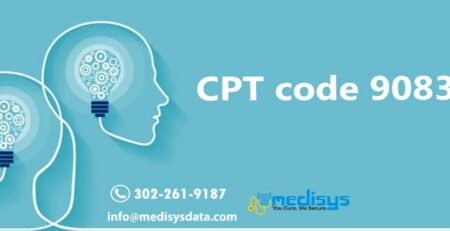CMS has established two modifiers, CQ and CO, to indicate services furnished in whole or in part by a physical therapist assistant (PTAs) or occupational therapy assistants (OTAs), respectively. The modifiers are defined as follows:
- CQ modifier: Outpatient physical therapy services furnished in whole or in part by a physical therapist assistant
- CO modifier: Outpatient occupational therapy services furnished in whole or in part by an occupational therapy assistant
Effective for claims with dates of service on and after January 1, 2020, the CQ and CO modifiers are required to be used, when applicable, for services furnished in whole or in part by a physical therapist assistant (PTAs) or occupational therapy assistants (OTAs), on the claim line of the service, along with the respective GP or GO therapy modifier, to identify those services furnished in whole or in part by a PTA or OTA under a physical therapy or occupational therapy plan of care.
These modifiers are required to be used for therapy services furnished by providers that submit institutional claims, including the provider types: outpatient hospitals, rehabilitation agencies, skilled nursing facilities, home health agencies and comprehensive outpatient rehabilitation facilities (CORFs). However, the CQ and CO modifiers are not applicable to claims from critical access hospitals or other providers that are not paid for outpatient therapy services under the PFS or section 1834(k) of the Act. The CQ modifier must be reported with the GP therapy modifier and the CO modifier with the GO therapy modifier. Claims with modifiers not so paired will be rejected/returned as unprocessable.
Correct Application of Modifier CQ and CO
Step 1: Identify the 15-minute timed HCPCS/CPT codes
List the code numbers of each of the services furnished along with the number of minutes in total done by the PT, PTA, OT, or OTA. When a PT, PTA, OT, or OTA provides at least 15 minutes and less than 30 minutes of a service on a single treatment day, assign 1 unit; when multiples of 15 minutes are furnished, e.g., 30 minutes (assign 2 units) and 45 minutes (assign 3 units), etc. This needs to be the first step whenever it is applicable to the billing scenario. When any of these services, i.e., full 15-minute increments, are provided by PTAs/OTAs, the CQ/CO modifiers apply.
Applying the ‘8-minute rule’
After applying Step 1, where it is applicable, identify any minutes (including remaining minutes from Step 1) performed by a PT/OT and PTA/OTA for the same service/code. If determining whether the CQ/CO modifier is applicable for the final 15-minute unit, check to see if the PT/OT furnished 8 minutes or more of that last unit. If so, the last unit is billed without the CQ/CO modifier because the PT/OT provided enough minutes on their own to satisfy the Medicare billing criterion for an exception to the de minimis policy. Once the PT/OT meets or exceeds the 8-minute mark, for the final unit in a billing scenario, it does not matter how many minutes the PTA/OTA furnishes for the same service/code, that final unit is billed without a CQ/CO assistant modifier. In these cases, any minutes that the PTA/OTA furnishes for the final unit would not matter for purposes of billing Medicare. After applying Step 1, where it is applicable, and determining the final unit of a billing scenario, compare the minutes for the same 15-minute service/code provided by the PT and PTA (or the OT and OTA). Here are 2 times the de minimis policy is applicable to that final 15-minute unit:
- Applying the De Minimis Standard Policy: Cases When the CQ/CO Modifier is Applied to Services Defined by 15-minute Increments.
- When the PTA/OTA furnishes 8 minutes or more of a service and the PT/OT provides less than 8 minutes of the same service.
- When both the PTA/OTA and the PT/OT each furnish less than eight minutes for the final 15-minute unit of a billing scenario.
- Applying the De Minimis Standard Policy: Cases When the CQ/CO Modifier is Applied to ‘Untimed’ HCPSC/CPT Codes that Can Only be Billed with One Unit.
The de minimis policy is applicable when the PT and the PTA or the OT and the OTA each independently provide minutes of the same untimed service, including: supervised modalities, evaluations and re-evaluations, group therapy, and certain RTM codes. In these cases, either the simple or percentage method can be used to determine if the PTA/OTA furnished more than 10 percent of the service. If so, the CQ/CO modifier is appended to the claim for that unit of service.
Instances where there are two 15-minute remaining units left to bill and the PT/OT and PTA/OTA each provide between 9 and 14 minutes with a total time of at least 23 minutes and no more than 28 minutes.
This finalized policy applies in a limited number of cases where there are two 15-minute units of therapy remaining to be billed for the same service. For these limited cases, we are allowing one 15-minute unit to be billed with the CQ/CO modifier and one 15-minute unit to be billed without the CQ/CO modifier in billing scenarios where there are two 15-minute units left to bill when the PT/OT and the PTA/OTA each provide between 9 and 14 minutes of the same service when the total time is at least 23 minutes and no more than 28 minutes.
Billing for the service with the most time
After applying Step 1 for each service and determining there is only one unit left to bill, compare the remaining minutes furnished by the PT/OT for the one service with the remaining minutes furnished by the PTA/OTA for the different service. Bill for the service that took the most time. That is, assign the CQ/CO modifier to the service provided by the PTA/OTA when the time he/she spent is greater than the time spent by the PT/OT performing the different service. The CQ/CO modifier does not apply when the minutes spent delivering a service by the PT/OT are greater than the minutes spent by the PT/OTA delivering a different service.
Tie-Breaker
You have to identify the different HCPCS/CPT codes where the PT/OT and the PTA/OTA each independently furnish the same number of minutes. Once Step 1 is completed for each service (when applicable) and determining there is only one unit left to bill, the remaining minutes for each service, one provided by the PT/OT and the other provided by the PTA/OTA, are the same, either service may be billed, but not both. If the service provided by the PT/OT is billed, the CQ/CO modifier does not apply. However, if the service provided by the PTA/OTA is billed, the CQ/CO modifier does apply
We shared excerpt from section 20 of Medicare Claims Processing Manual (MCPM)- Chapter 5 for reference only, you can refer manual for detailed information. Medisys Data Solutions is a leading medical billing company providing complete billing and coding services for various medical billing specialities. If you need any assistance in occupational and physical therapy billing, contact us at info@medisysdata.com / 888-720-8884












